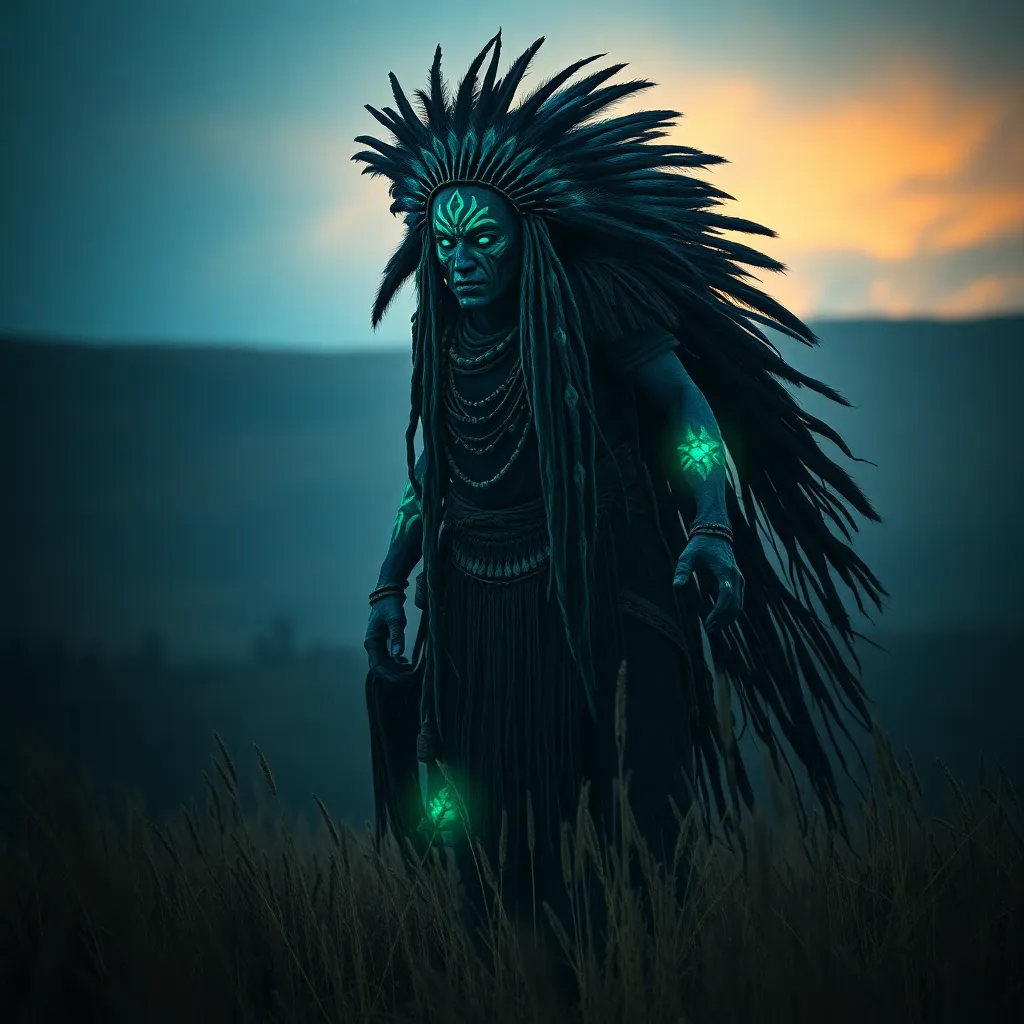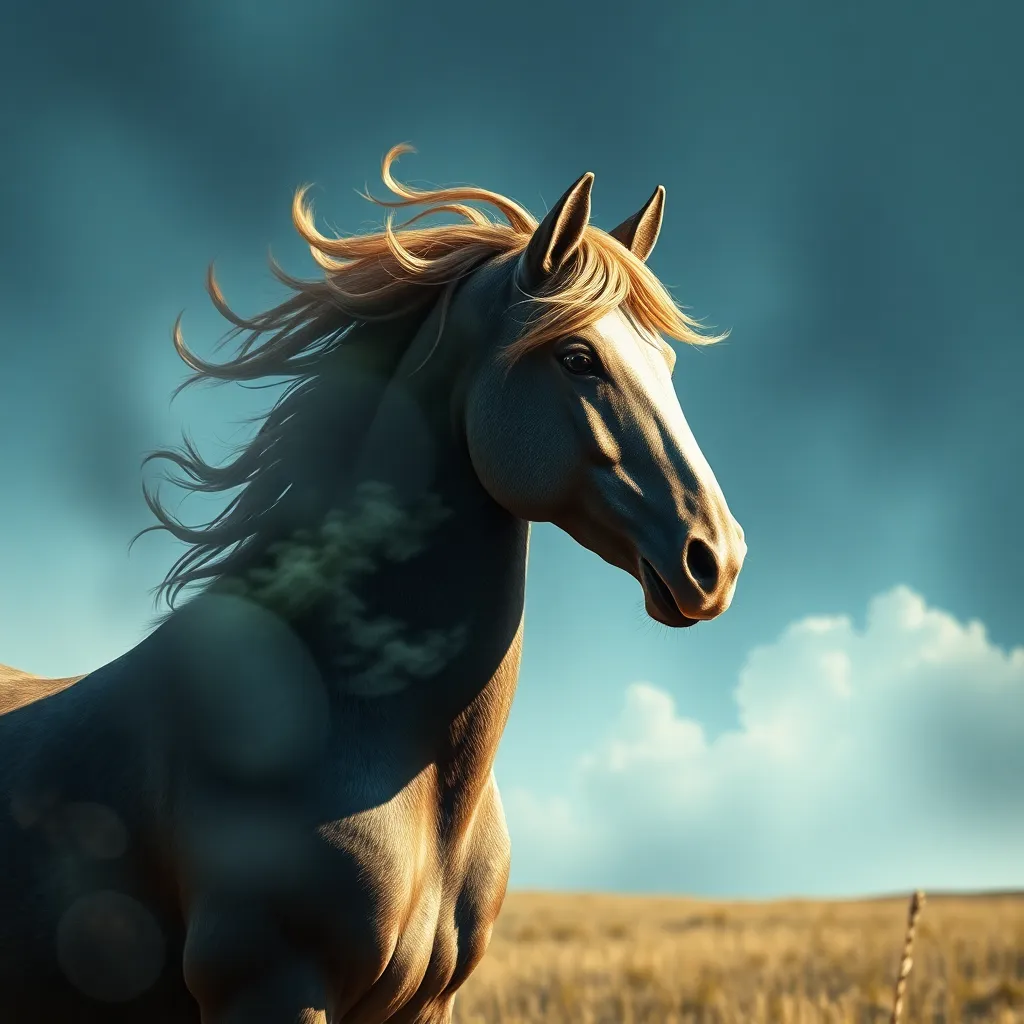The Ancient Spirits of the Great Plains: Exploring Cheyenne Skinwalker Legends
I. Introduction
The Great Plains, a vast expanse of grasslands and rolling hills, is home to many Indigenous tribes, including the Cheyenne people. Rich in history and culture, this region has long been a site of spiritual significance and storytelling. One of the most intriguing aspects of Cheyenne folklore is the concept of Skinwalkers, supernatural beings that embody themes of transformation and moral complexity.
Skinwalkers are part of a larger tapestry of Native American beliefs that reflect the intricate relationship between humans and the natural world. Understanding these legends within their cultural context is essential for appreciating their significance and enduring impact on contemporary Cheyenne society.
II. Historical Background of the Cheyenne Tribe
The Cheyenne people have a rich history that traces back to their origins in the Great Lakes region. Over centuries, they migrated westward, adapting to the Great Plains’ unique environment. Their nomadic lifestyle revolved around hunting bison, which played a central role in their diet and culture.
Traditional beliefs and spiritual practices among the Cheyenne are deeply rooted in their connection to nature. They believe in a spirit world that influences daily life, with rituals and ceremonies designed to honor these connections. Storytelling has been a vital part of Cheyenne culture, serving as a means of preserving history, imparting moral lessons, and explaining the mysteries of the world.
III. Understanding Skinwalker Legends
In Cheyenne mythology, Skinwalkers are defined as witches or sorcerers who possess the ability to transform into animals or take on their characteristics. This shapeshifting ability is often seen as a manifestation of malevolent intent, and Skinwalkers are frequently associated with dark magic and moral transgressions.
While Skinwalker beliefs are prevalent in various Native American cultures, there are unique characteristics within Cheyenne narratives. For instance, the Cheyenne view Skinwalkers not only as threats but also as cautionary figures that embody the consequences of moral failings.
In the broader context of Cheyenne cosmology, Skinwalkers serve as reminders of the delicate balance between good and evil, reinforcing the importance of ethical behavior and community harmony.
IV. The Nature of Skinwalkers
Skinwalkers are renowned for their transformation abilities, which allow them to shapeshift into various animals, such as wolves, coyotes, or birds. This notion of shapeshifting is deeply intertwined with the Cheyenne understanding of the natural world, where animals are seen as powerful spirits with intrinsic wisdom.
The connection between Skinwalkers and animal spirits emphasizes the Cheyenne belief that all beings are interconnected. Wearing animal hides is particularly significant, as it symbolizes not only a transformation but also a deep respect for the spirit of the animal. However, such acts are often viewed with suspicion when associated with Skinwalkers, as they can signify a violation of natural laws.
V. Skinwalker Stories and Their Cultural Significance
Cheyenne Skinwalker stories often contain common themes and motifs, such as betrayal, loss, and the struggle between good and evil. These narratives serve multiple purposes, including entertainment, moral instruction, and cultural preservation.
- Fear and Caution: Many Skinwalker stories evoke a sense of fear, illustrating the dangers of straying from moral paths. They serve as warnings against actions that might lead to negative consequences.
- Lessons and Morals: Through the trials faced by characters in these stories, listeners learn important life lessons about respect, community, and the balance between nature and humanity.
VI. Modern Interpretations and Misunderstandings
In contemporary society, the depiction of Skinwalkers has been heavily influenced by popular culture. Movies, television shows, and books often portray these beings in sensationalized or inaccurate ways, leading to widespread misunderstandings of Cheyenne beliefs.
This misrepresentation can lead to cultural appropriation, where outsiders adopt Cheyenne symbols and stories without understanding their significance. To combat these issues, Cheyenne communities actively engage in cultural preservation initiatives, working to educate others about their traditions and protect their narratives from distortion.
VII. The Role of Skinwalkers in Contemporary Cheyenne Society
Despite the challenges posed by modern interpretations, Skinwalker legends continue to hold relevance among the Cheyenne people today. These stories are woven into contemporary life, reminding community members of their cultural heritage and moral values.
The integration of traditional beliefs into modern life is evident in various ways:
- Cultural Events: Ceremonies and storytelling events often feature Skinwalker narratives, reinforcing their importance in community gatherings.
- Education: Cheyenne elders play a crucial role in passing down these stories to younger generations, ensuring that the lessons of the past remain alive.
- Advocacy: Cultural preservation initiatives aim to protect Cheyenne traditions and combat stereotypes, fostering a deeper understanding of their rich history.
VIII. Conclusion
Skinwalker legends are a vital part of Cheyenne culture, representing complex themes of morality, transformation, and the relationship between humans and the natural world. As we delve into these narratives, it becomes clear that they offer profound insights into the Cheyenne worldview and ethical teachings.
It is essential to approach Indigenous narratives with respect and an open mind, recognizing their significance and the wisdom they impart. The enduring power of Cheyenne folklore, particularly the stories of Skinwalkers, continues to resonate, reminding us of the importance of cultural heritage and the lessons embedded in these ancient tales.



